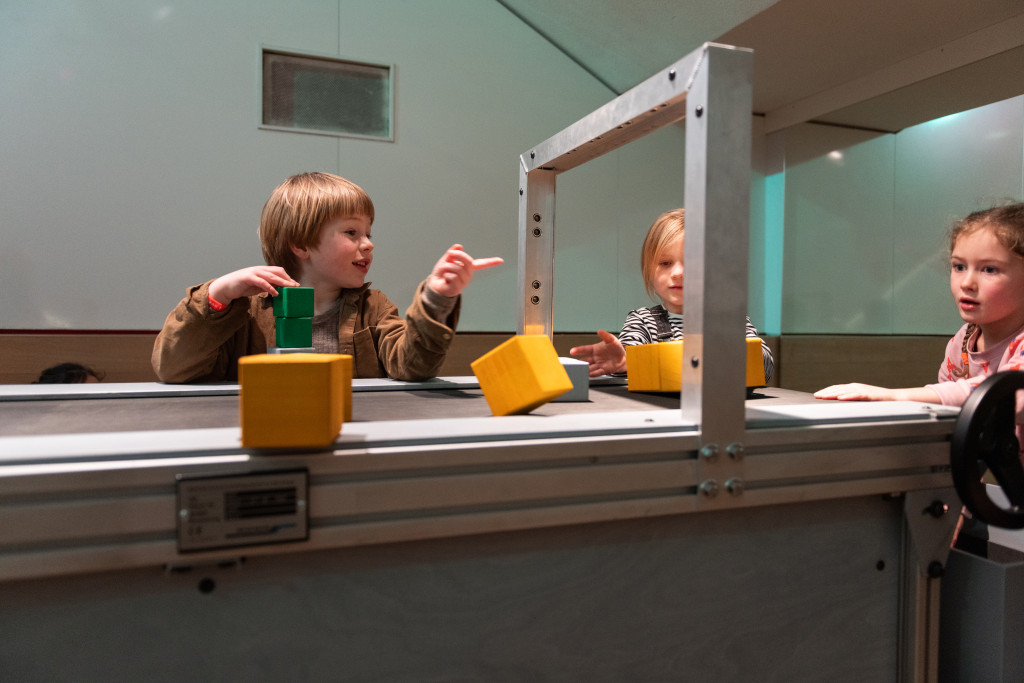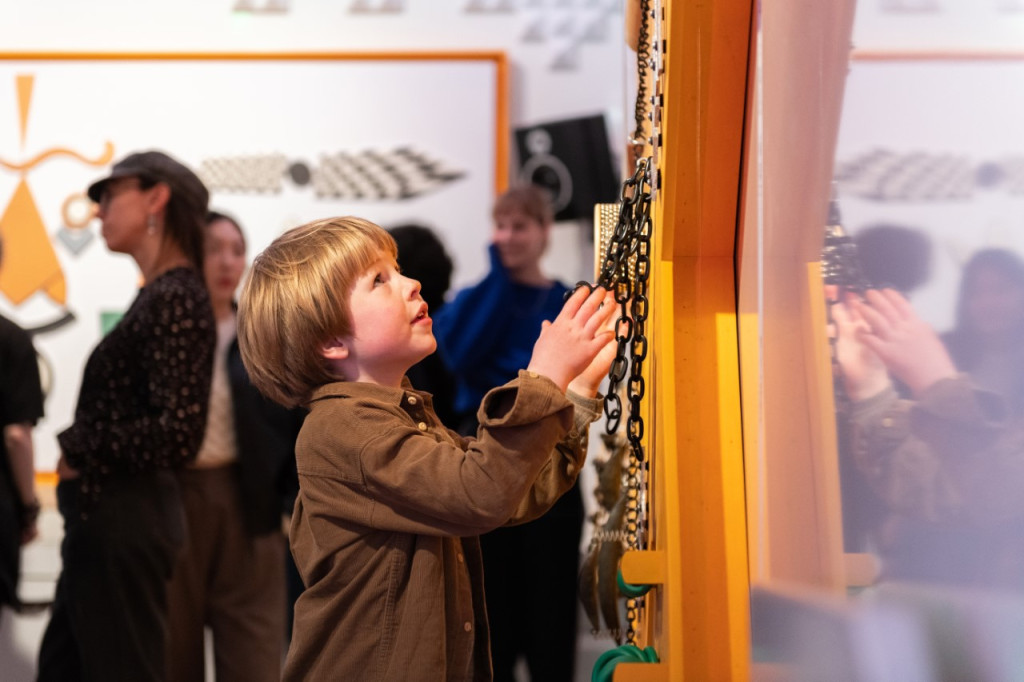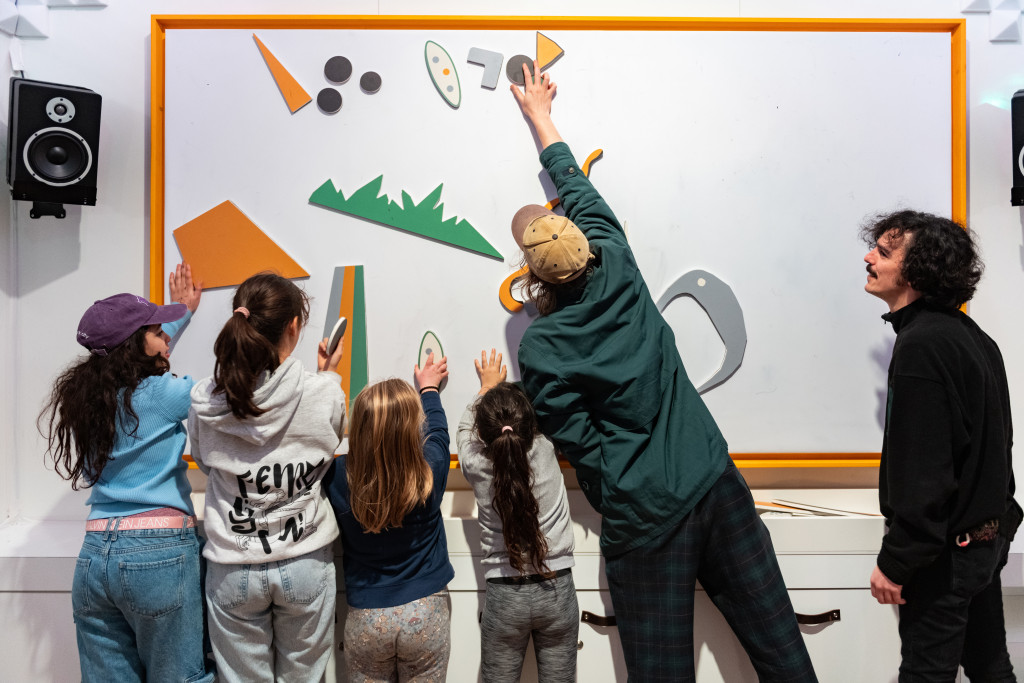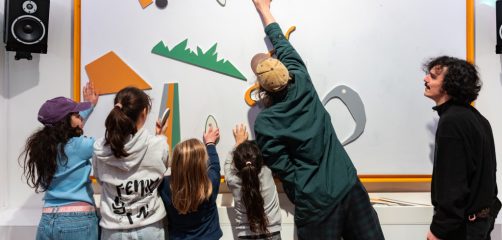FACTORY MUSIC

Imagine a conveyor belt that’s also a musical instrument. That’s the idea behind Factory Music, an installation based on the same principles as a music box. Its creators looked to the industrial revolution and the modernist era for inspiration. That led to the idea of creating music by literally placing the building blocks of a composition on a conveyor belt. You can arrange and stack the blocks as you like on the conveyor belt to make your own sound piece. The aural design uses sounds made by heavy-duty tools and objects—like a drill, metal pans, a grater and a countertop. Create your own industrial sonic universe by distorting, stretching, reshaping and smoothing out these sounds.
It’s up to you how fast you turn the wheel that sends the blocks through the bridge fitted with remote sensors. Will you make the blocks go forwards then backwards, or are you going to send them right through so they tumble off the end of the belt and clatter into the crate? These sounds are also part of your musical composition.
TOUCHY-FEELY SOUND WALLS
The two panels on the walls are crammed with all sorts of instruments, rings and chains, and a rustling metal sheet. Explore the objects in the panels and discover all the noises they can make—by yourself or together. What kind of rattle does a wooden ring make? How different is it from the sound of the metal ring on the other side? Can you make music by ‘playing’ a zipper? And what do strings and beads sound like together? These musical walls are an invitation to get together and listen to all the hidden sounds—to make music together.
The visual design of the panels is based on À volonté / At Will (1957), by graphic artist and composer Sedje Hémon.

How does a square sound? How about the color yellow? And what do they sound like together? Have a go at experimenting with sounds and creating your own sound art.
Music has long been an important source of inspiration for many artists. Some artworks are like a melody of color and light. And sometimes when you listen to music, you start to visualize all sorts of things. In this SoundLAB, you can explore the way images and sounds combine to create something new.
Play the pluck and feel walls, compose new images and sounds on the Kandinsky Canvas, and create industrial music on the assembly line.

KANDINSKY CANVAS

This installation was inspired by Wassily Kandinsky’s 1922 painting Kleine Welten IV, using sound to bring it to life in new ways. The creators of the installation took Kandinsky’s shapes as the basis for magnetic objects. Now you can use them to make your own picture. Each object generates a unique tone when placed on the canvas, so the image you create will also have its own unique sound. Put multiple objects on the canvas to create your own tonal universe—a unique sonic artwork. Work together to inspire and surprise each other, and experience new dimensions to the relationship between sound and vision.
Kandinsky Canvas is made up of 192 magnetic sensors, 180 metres of wire, 1,900 soldering points (all applied by hand), 8 multiplexers and 1 Arduino microcontroller. They are used to generate an aural design based on multiple layers of algorithms. When the canvas is empty, you’ll hear waves of so-called pink noise that sounds like the sea. But you can make your own sounds by placing the magnetic objects on the canvas. Set one in the middle to make ‘chunky’ sounds, or else move it downwards to smooth them out. Objects at the top of the canvas, meanwhile, produce light and airy sounds. Try it out and hear it for yourself!
This Kandinsky is on display in the exhibition MODERN until September 24.
This SoundLAB is a partnership between Stedelijk Museum, Muziekgebouw aan ’t IJ and students from the Music and Technology department at HKU Utrecht University of the Arts. Muziekgebouw aan ’t IJ is home to the original SoundLAB, where the focus is on creating new sounds using weird and wonderful instruments.
Concept: Emma Harjadi Herman and Floortje Smehuijzen
Muziekgebouw aan ’t IJ team
Artistic Coordination: Floortje Smehuijzen
Music technology and system design: Görkem Arıkan
Advice and project management: Temo Gonzalez
Asseccibility installations: Noortje Vredeveld
Woodwork: WiKo: Wilbert de Joode en Koen Molenaar
HKU Utrecht University of the Arts team, Music and Technology department
Sound design, Algorithmic composition: Thomas Postma
Object design, Sample recording: Patrick Hiwat
Creative system design, Arduino programming: Steven van Esch
Stedelijk Museum Amsterdam team
Project director: Margita van Vugt
Spatial and graphic design: Eva Heisterkamp
Construction SoundLAB: Peter Stel, Marc Claeijs, Alex Fischer
Lighting design: Studio Warmerdam
